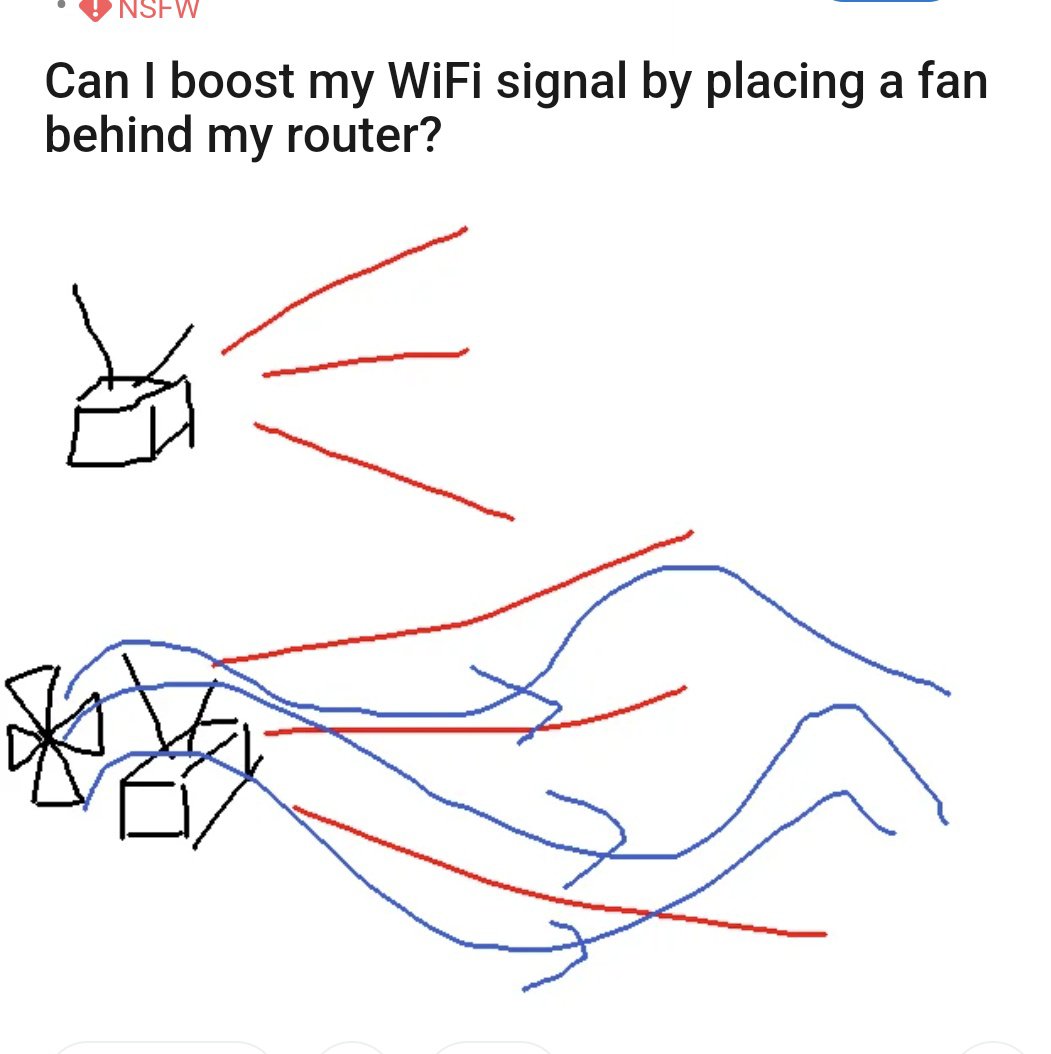this post was submitted on 12 Sep 2023
1166 points (97.7% liked)
Memes
44134 readers
2350 users here now
Rules:
- Be civil and nice.
- Try not to excessively repost, as a rule of thumb, wait at least 2 months to do it if you have to.
founded 5 years ago
MODERATORS
you are viewing a single comment's thread
view the rest of the comments
view the rest of the comments

I'm about 62% sure this is a joke...
Please help, I'm clueless about this kind of stuff.
It's the same principle of al satellite dish and it works, but I'm 86% sure that mirrors won't affect wifi, so we're still not at 100% but getting there.
Depends on what frequency your "mirror" mirrors.
A traditional one reflects higher frequency of electromagnetic rays (visible light) than what you need for wifi (in the microwave frequencies)
So you're saying the walls of an old microwave might do the trick
Jokes aside, anything made of metal will be a good enough reflector for most consumer use.
A coke can cut vertically in half makes a great parabolic relfector. Pepsi can maybe. Dr pepper not recommended.
Actually yes.
Microwave ovens work by exciting water molecules using many hundreds of watts of ~2.45 GHz microwaves.
This specific frequency has a heating effect on water, so when you blast enough of it at food, which is often very saturated with water, it will heat up. The heat energy will transfer to the rest of the molecules in the food by contact.
That's the general idea at least.... I'm sure there's more interactions that happen, water is just the most significant, to my knowledge.
So the protection in the microwave is capable of reflecting (for the purposes of containment) 2.4Ghz microwaves very well, and bluntly, does a good job with many other radio waves too, across a pretty broad band of frequencies.... so the material that makes up the protective chassis of a microwave is ideal for making a reflector for wifi, since it was constructed with the idea of reflecting 2.4Ghz frequencies. Microwave ovens create the signal fairly crudely with a magnetron, but the underlying concepts are the same.